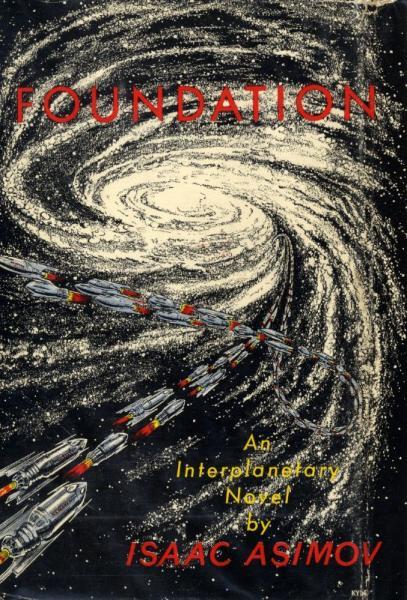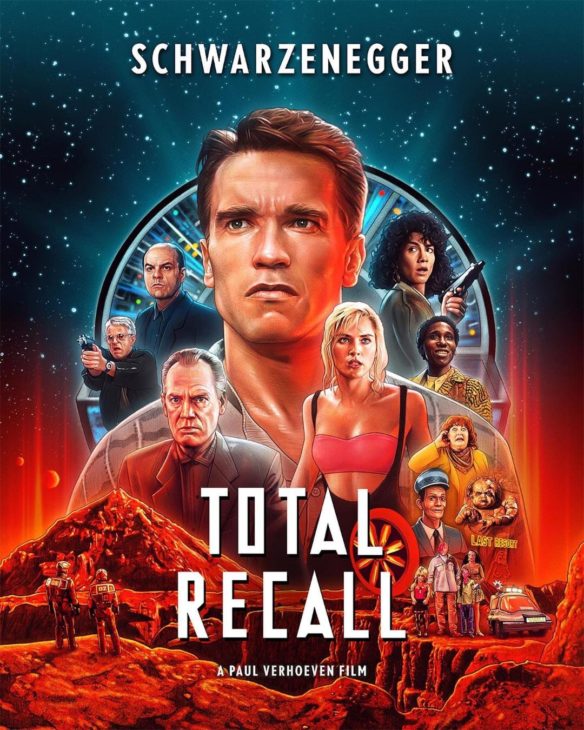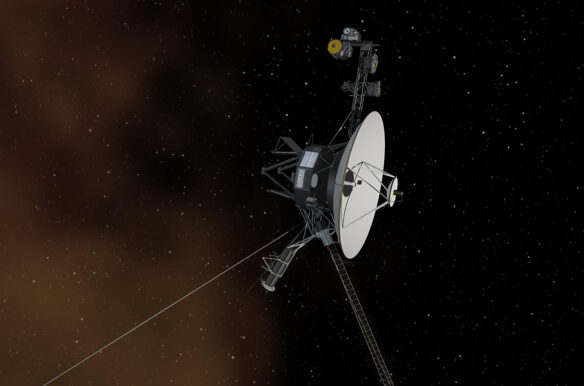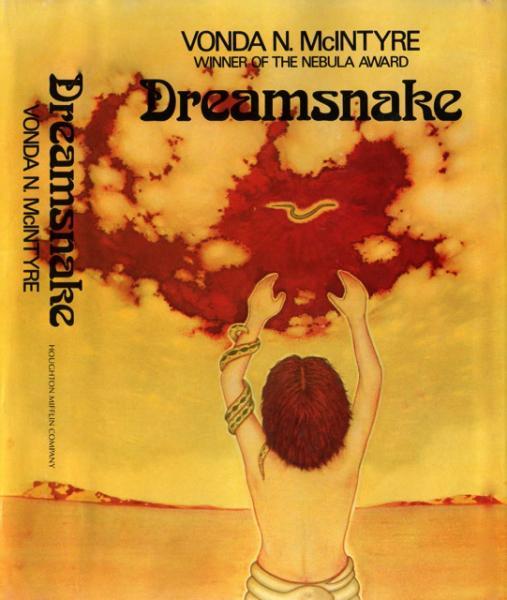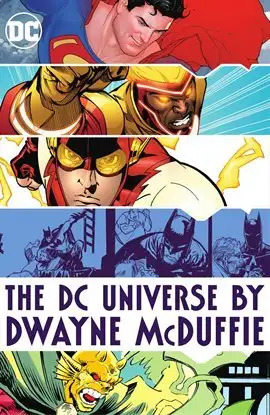(1) PROPS TO VARLEY. Polygon’s Tasha Robinson says “Only one science fiction novel really predicted AI right”.
The current cultural fascination and frustration with artificial intelligence is nothing new. As far back as the 1921 Czech play R.U.R. — the workers-rights story that first coined the term “robot” — science fiction writers have channeled fears about artificial intelligence into stories where robots represent (or just bring out) the absolute best or worst of humanity…..
…John Varley’s 1992 novel Steel Beach lays out a wild far-future world where aliens have destroyed human life on Earth. Humanity has decamped to the Moon (the unwelcoming “steel beach” of the title) and other colonies, forming the “Eight Worlds” system in which many of Varley’s stories and novels are set. In the future of Steel Beach, humans run dinosaur ranches for meat, alter and rewrite their bodies at a whim, and grow organic brain-to-computer interfaces so they can operate devices with a thought. But the book still gets at some aspects of real-world AI better than most sci-fi books set in near-present futures. In particular, Varley doesn’t just consider the impact of AI on humanity — he digs into the impact of humanity on AI….
… The idea that most people turn this endlessly sympathetic companion into nothing more than a hands-free texting tool seems improbable. But notably, Hildy’s own relationship with the CC is a lot more complicated, emotional, and invested, which suggests Hildy isn’t necessarily aware of how other people interface with their omnipresent overlord.
The reasoning behind that relationship is what really makes Steel Beach feel so insightful about the problems with present-day AI. Steel Beach is an episodic, expansive novel that uses Hildy’s search for a meaningful, satisfying life as a frame for vignettes about the futures of journalism, body modification, relationships, capitalism, literacy, mental health, escapism, and a whole lot more. (Especially sex: The book’s provocative opening line is “In five years, the penis will be obsolete.”) But Hildy’s relationship with the Central Computer is the throughline that holds it all together….
(2) WE WANT – INFORMATION. [Item by Steven French.] “Fun, flirty and far too brief: why did Ncuti Gatwa leave Doctor Who so soon?” The Guardian doesn’t really answer the question but it’s hard to disagree with their conclusion:
Gatwa’s Doctor was fun, flirty and full of joy, but it is difficult not to conclude that we hadn’t seen enough of him in the role, and now we never will….
… The show sometimes feels stuck between a rock and a hard place in the modern era. It has to compete in a streaming environment where grownup fans also watch shows such as Andor or The Last of Us and compare it directly with those. The BBC though is also still trying to make a show whose primary purpose is to be broadcast on Saturday evening on BBC One for a communal multigenerational family audience gathered around the TV. And that is an audience that is increasingly vanishing in houses with multiple screens and multiple viewing options.
Gatwa’s era also seemed to be riding two slightly conflicting horses. Russell T Davies returned as showrunner with the nostalgia rush of having David Tennant and Catherine Tate back in the Tardis for three 60th anniversary specials, then promised a softish reboot with the aim of picking up new audiences and starting afresh as “Season one” with a new Disney+ international distribution deal. But he also opted to bring back companions from the 1960s and 1980s, and have the return of niche villains and enemies that necessitated flashbacks to episodes from the 1970s, which didn’t exactly scream “accessible”….
(3) SPEEDY OPTION. [Item by Dann.] Barely a month after initial release, James Cameron has picked up the film rights to Joe Abercrombie’s The Devils. It’s nice to see good karma in action.“James Cameron’s Company Has Picked Up the Rights to Joe Abercrombie’s The Devils” at Reactor.
… Cameron continues, “I’m looking forward to the writing process with him, though I’m certain this adaptation will practically write itself because Joe writes very visually, almost in scenes, and with a very cinematic structure. I can’t wait to dig into this as I wind down on Avatar: Fire and Ash. It will be a joyful new challenge for me to bring these indelible characters to life.”
The Devils was published by Tor Books less than a month ago, on May 13th….
(4) THERE WAS A RACE IN HOLLYWOOD, TOO. “75 Years Ago, A Shockingly Dark Sci-Fi Adventure Tried To Predict The Space Race” – Inverse remembers.
Several years before the Space Race officially began, two suspiciously similar Hollywood movies raced to launch their lunar expeditions onto the big screen. And even though it had a year-long head start, Destination Moon ended up as the Soviet Union to Rocketship X-M’s United States.
George Pal Productions had started working on the former in 1949, proudly teasing its state-of-the-art construction, scientific accuracy, and Technicolor visuals in an extensive marketing campaign. But when various snags delayed the release date, Lippert Pictures saw an opportunity to steal its thunder, and landed Rocketship X-M in theaters 75 years ago today.
Remarkably, the finished product rocketed into theaters just 25 days after shooting wrapped. And while the fast-tracked film doesn’t soar to the same heights as its costlier rival — it’s largely in black and white, for one thing, while the lack of any expert consultants soon becomes abundantly clear — it still stands as a fascinating curio….
(5) ON THE AIR. Phil Nichols’ new episode of Bradbury 100 is about “Radio Classics – Dimension X / X Minus One”, two series that adapted Ray’s work.

Here’s another new episode of Bradbury 100, and this time I return to Ray’s stories in the golden age of radio, looking at the classic science fiction drama series Dimension X and X Minus One.
I’ve mentioned these shows before on the podcast, but I figured it was time to make them the focus.
Although Ray Bradbury was himself a scriptwriter and dramatist, he didn’t do any writing specifically for these two shows. And unlike the series Suspense (which I looked it in episode 61), Dimension X and X Minus One only produced adaptations of stories which had already been published.
But what terrific adaptations they were! With scripts by future Emmy Award winners Ernest Kinoy and George Lefferts, these series never put a foot wrong. The scripts are pretty close to the original stories, without being simple, lazy transcriptions.
In this episode I include clips of many of the Bradbury-based episodes, the most striking of which is the run of episodes based on stories from The Martian Chronicles. But if you’ve never listened to a Dimension X or X Minus One in its entirety, I would urge you to do so. Go to a darkened room, and let your mind conjure up… well, something like The Twilight Zone or The Outer Limits… or wherever your imagination takes you…
(6) JEOPARDY! Andrew Porter says that it paid for tonight’s Jeopardy! contestants to know their Nineteenth Century sff.
Final Jeopardy: Category: Science Fiction
Clue: Referring to what’s wrongly believed to be a meteorite, “The Falling Star” is the title of Chapter 2 of this 1898 novel.
Wrong question: What is “The Time Machine”?
Correct question: What is “War of the Worlds”?
(7) TODAY’S BIRTHDAY.
[Written by Paul Weimer.]
June 2, 1915 — Lester del Rey. (Died 1993.)
By Paul Weimer: For me, first and foremost, Lester del Rey was a publisher and an editor. Many of the books I first encountered reading science fiction, back 4 decades ago, were published by Del Rey, which he founded with his wife Judy Lynn del Rey. And for a good while, that’s all I thought that he was (although his legacy and influence as a publisher is huge).
The Science Fiction Hall of Fame anthology was a gateway to a number of authors for me. Theodore Sturgeon. Murray Leinster. Fritz Leiber (for “Coming Attraction”, although I would soon discover Fafhrd and the Grey Mouser). And Lester del Rey, for “Helen O’Loy”. I had read enough Greek Mythology by that point to get the idea that this was a Helen of Troy story, and it was perhaps the first story I read where a robot was an object of romantic interest. Helen’s story, and the tragedy of it moved me deeply.
I soon came across other del Rey stories, here and there, randomly, sprinkled in best of collections and favorite science fiction stories and the myriad other SF anthologies that I read in the first decade of my science fiction reading.
But it was Harlan Ellison® who turned me onto perhaps the best and my favorite of the Lester del Rey stories. In one of his own collections about the relationship between men and Gods, he mentioned a Lester del Rey story “For I am a Jealous People”. I could see the biblical allusion in the title, and I decided to seek it out.
I recently re-read it, and it still slaps, hard. “For I am a Jealous People” is a kicker of a story, where the Abrahamic God is real, has always been real. But now, God is angry with humanity and fed up with us, and basically has sided with aliens invading Earth and its possessions. That is a smash to the face to begin with, but it’s humanity response to this revelation in the story that really brings it home to me, the power of a del Rey story at its best. Humanity’s response could have been any number of plausible results. Regret. Sadness. Despair. Resignation. Anger. Del Rey goes for “Good. Bring it!” It’s a muscular answer to the question of what to do when even God is against you, and it remains powerful to this day.

(8) COMICS SECTION.
- Saturday Morning Breakfast Cereal clarifies Star Trek transporters.
- Brewster Rockit detects dad jokes.
- Brilliant Mind of Edison Lee delivers a ghastly pun of its own.
- Close to Home sets weird boundaries.
- Dinosaur Comics argues with the Eighteenth Century.
- Free Range has its own variation of that argument, asking what if the revolution started and no one saw it?
- Six Chix embraces a trend. Sort of.
(9) KINGPIN FOR MAYOR. The Brooklyn Eagle is there when “’Daredevil’ gives an ominous look to Brooklyn Borough Hall”.
Downtown Brooklyn passers-by were treated to moody lighting and fog effects at Brooklyn Borough Hall on Thursday evening when the Disney+ series “Daredevil: Born Again” filmed a scene on the plaza steps.
Banners showing a man’s stern face (“Mayor Fisk,” aka crime boss “Kingpin,” played by Brooklyn-born actor Vincent D’Onofrio) and the words “New York Born Again” hung between the pillars; an armored vehicle was parked on the plaza; and flowers were piled on the steps, giving the scene an ominous air.
Signs indicated the shoot was for a show named “Out of the Kitchen,” but crew members told the Brooklyn Eagle that is the working title for the most recent incarnation of “Daredevil.” The series features Charlie Cox as blind attorney Matt Murdock — the superhero Daredevil — reprising his role from Marvel’s Netflix television series….

(10) OF COURSE THEY DO. “Meta plans to replace humans with AI to assess risks” – NPR has the story.
For years, when Meta launched new features for Instagram, WhatsApp and Facebook, teams of reviewers evaluated possible risks: Could it violate users’ privacy? Could it cause harm to minors? Could it worsen the spread of misleading or toxic content?
Until recently, what are known inside Meta as privacy and integrity reviews were conducted almost entirely by human evaluators.
But now, according to internal company documents obtained by NPR, up to 90% of all risk assessments will soon be automated.
In practice, this means things like critical updates to Meta’s algorithms, new safety features and changes to how content is allowed to be shared across the company’s platforms will be mostly approved by a system powered by artificial intelligence — no longer subject to scrutiny by staffers tasked with debating how a platform change could have unforeseen repercussions or be misused….
(11) BEFORE AND AFTER DARK. [Item by Steven French.] Nora Claire Miller on screen savers, poetry and her gran’s iMac in The Paris Review: “Recurring Screens”.
The world’s first screen saver was not like a dream at all. It was a blank screen. It was called SCRNSAVE, and when it was released in 1983 it was very exciting to a niche audience. It was like John Cage’s 4’33″ but for computers—a score for meted-out doses of silence….
…My grandmother’s iMac spent most of its time showing Flurry, a dancing rainbow spider that was the first-ever Macintosh screen saver when it debuted in 2002. My grandmother was very tech-averse and preferred to write on a yellow legal pad. Whenever she needed to use the iMac, she’d call me with questions. “Thank goodness you picked up,” she’d say. “An alternate universe has emerged in the corner of my screen. Can you help?”
I quickly gave up on trying to convince her to use words like “window” or “application” instead of “planet” or “dimension.” Her descriptions felt closer to the real experience of using a computer—like trying to fly a spaceship. She read a lot of sci-fi. I helped her download Ursula K. Le Guin’s The Lathe of Heaven from iTunes as an audiobook. We listened together as a man altered collective reality with his dreams….

(12) BLACK MIRROR EFFECTS. Animation World Network takes us “Inside the VFX of Netflix’s ‘Black Mirror – USS Callister: Into Infinity’ Season 7 Finale”.
Black Mirror’s 7th season finale, “USS Callister: Into Infinity,” a sequel to the fan-favorite 2017 Season 4 opening episode, “USS Callister,” picks up years later where the ship’s crew, led by Captain Nanette Cole, is stranded in an infinite virtual universe, fighting for survival against 30 million players. MacLachlan spoke with AWN about how he and the visual effects team began with a fresh visual direction and an ambitious VFX brief, modernizing the original look while employing a collaborative pipeline to produce needed shots, and why family visits to set might help inspire a new generation of digital artists….
…He adds, “Some of the stuff we designed as we did the VFX, and some of the things Union VFX did were absolutely fantastic. You know, the teleportation, the defragging / fragging, the spaceship design, the space battles, they were all new elements this time around.”
“There are north of 600 VFX shots in the episode, which is a significant shot count,” MacLachlan shares. “The largest body of work was obviously the space battle sequences in and around the Heart of Infinity,” he says. “There’s a lot of fully CG content — space battles, explosions, laser fire, dynamic camera moves.”
Designing the action around a unique central structure was critical. “A key feature of the show was that everything is moving in and around this swirling, gyroscopic behemoth of a center of the Heart of Infinity,” MacLachlan says. “The team had to coordinate shots where the camera moves in and around a moving obstruction. I can’t think of another space battle where the object is shifting this way.”…
(13) PERSISTENT TECH. BBC Future also keeps an eye on the past: “Obsolete, but not gone: The people who won’t give up floppy disks”.
…Floppy disks or diskettes emerged around 1970 and, for a good three decades or so, they were the main way many people stored and backed up their computer data. All the software and programmes they bought came loaded onto clusters of these disks. They are a technology from a different era of computing, but for various reasons floppy disks have an enduring appeal for some which mean they are from dead.
The original 8in (20cm) and 5.25in (13cm) floppy disks were actually floppy – you could bend them slightly without harming the magnetic material inside.
But the later 3.5in (8.75cm) disks were arguably the most successful. It is these that came to be immortalised as the “Save” icon in many computer applications even today. The 3.5in disks, which Espen Kraft uses, are small and rigid, not actually floppy, but that means they are both more robust and easier to store….
…Kraft adores floppy disks because they help him creatively, he says. He doesn’t want to make music that merely apes 1980s styles – rather, he wants it to sound like it actually came from that decade.
It’s when Kraft is using antiquated equipment that he makes his best music, he says. Feeling the ruggedness of a treasured disk as it slots into a dusty old drive. In his opinion, more modern equipment with gigabytes of storage doesn’t come close. He even performs live shows with floppy disks and has used them during musical appearances on Norwegian television.
To this day, Kraft records new sounds and samples straight onto this physical format, including crickets singing in the forest near his house in the evening. If you pitch that cacophony down by 10 octaves or so, and add some reverberation as well as a little delay, then lo: “You have instant music,” says Kraft. “A very nice custom soundstage,” he says….
[Thanks to Chris Barkley, Cat Eldridge, SF Concatenation’s Jonathan Cowie, N., Dann, Michael J. Walsh, Mark Roth-Whitworth, Steven French, Kathy Sullivan, Teddy Harvia, Mike Kennedy, Andrew Porter, and John King Tarpinian for some of these stories. Title credit belongs to File 770 contributing editor of the day Cat Eldridge with an assist from OGH.]












